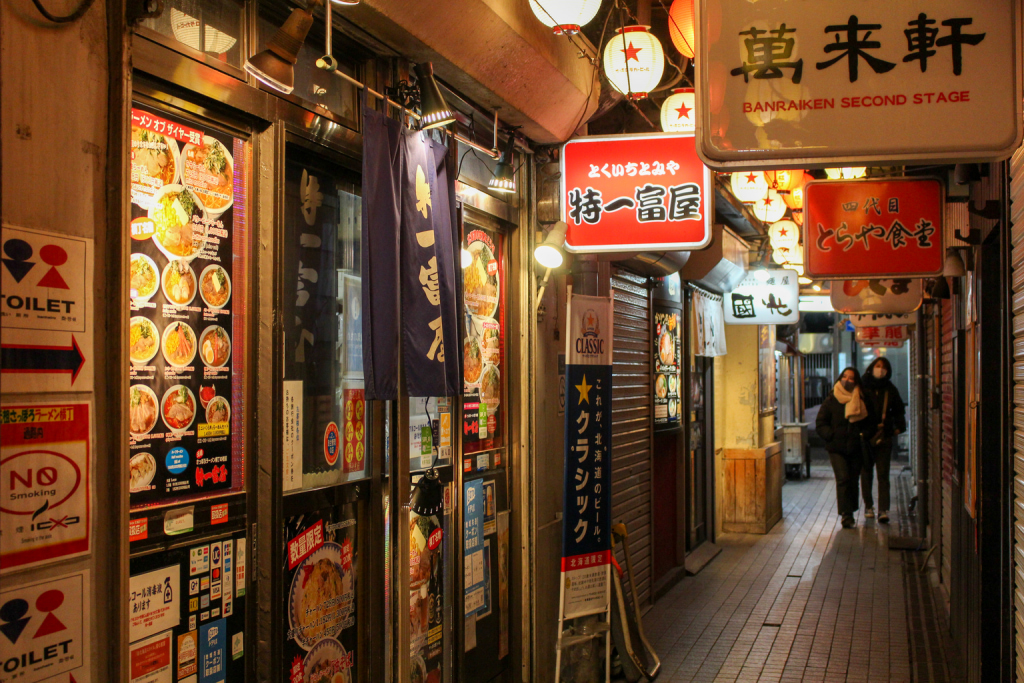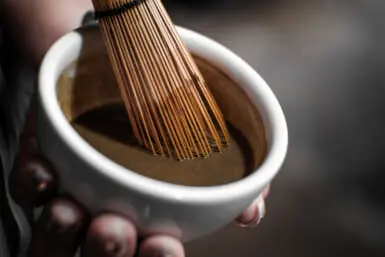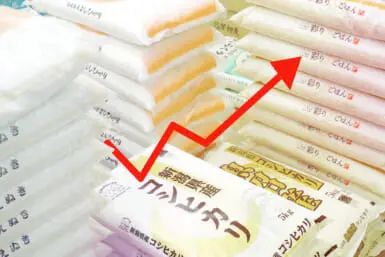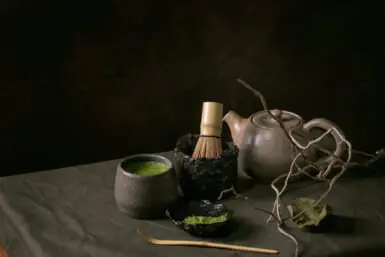Tucked away amongst the narrow streets of Sapporo’s entertainment district Susukino lies Ganso Ramen Yokocho. Lit up by a cyberpunk-esque neon entrance sign, the small alleyway is home to 17 ramen shops, serving Sapporo’s classic miso ramen among other creative culinary iterations of the dish. It’s probably the best place in Sapporo to satisfy your ramen craving.

Down the Memory Lane of Ramen Street
Back in 1951, eight small houses were built next to Toho Koraku Theatre, each serving delicious salt and soy sauce based ramen. The street gained the name “Koraku Ramen Famous Store Street” and quickly became the top destination spot for ramen in Sapporo. Locals and tourists alike kept coming, boosting the city’s economy and the ramen scene. The shops continually changed, meeting the ongoing needs and tastes of ramen until 1969 when it was dismantled in preparation for the Sapporo Olympics. Two years later, in 1971, it was reconstructed and named Ganso Ramen Yokocho, with 17 shops lining the sides of the alleyway.
Walking down the yokocho evokes a sense of nostalgia. The narrow alleyway is barely wide enough for two people to walk alongside each other. Each shop has a brightly lit sign with a backlit display board of their ramen menu and overhanging paper lanterns covering the vents and electronics. Steam shoots out of the vents and the different aromas fill the alleyway as you walk past. Peering through each sliding door, the shops are tightly packed, most with only countertop seats. Each shop has many variations and their own take on the classic Sapporo miso ramen.

Classic miso ramen
Sapporo Miso Ramen
The birth of Sapporo’s classic miso ramen can be traced back to a small shop called “Aji no Sanpei” in 1954. There’s a myth that a drunk customer requested noodles in their miso soup, however, according to the shop’s founder, Morito Omiya, this is not true. He said that miso soup was the inspiration for the dish. After the Second World War, many people were left malnourished. Omiya wanted to create a single bowl food, which would be nutritious as well as delicious. At first, customers were skeptical of the “miso flavored ramen.” After countless alterations, Omiya’s miso ramen was finally recognized by the media in 1955. From the 1960s on, miso ramen was known as a Sapporo specialty, leading to a boom in food tourism.
The famous dish included fried bean sprouts, onions, ground beef and cabbage accompanied by thick, chewy and curly noodles. Typically, in soy sauce or salt base ramen, the noodles are thin and straight. However, Omiya wanted to create curly noodles to soak the miso broth and prolong the flavor. He decided to partner with noodle company Nishiyama Seimen to create the curly noodles. This style is synonymous with miso ramen today. Omiya’s creations didn’t stop there. When ramen alone was not filling enough, he decided to serve ramen rice, which could be eaten with the remaining broth. Now, ramen and rice sets are all over Sapporo’s ramen shops.

Teshikaga ramen, seafood variety
Taking the Classic Ramen Forward and Beyond
Nowadays, shops in Ganso Ramen Yokocho are adapting Omiya’s classic miso ramen by using various different broths and toppings. Hokkaido is home to some of the finest seafood in Japan, if not the world. Ramen shops have been taking full advantage of that.
One of the most popular shops in Ganso Ramen Yokocho is Teshikaga Ramen. Here, there is an emphasis on using Hokkaido-based ingredients such as pigs raised near Teshikaga or scallops from the Sea of Okhotsk. The miso ramen is made using a tonkotsu broth base that has been bubbling away for over 20 hours. It’s topped with a char siu that’s been grilled to order over a shichirin grill, accompanied by ground beef and miso mix, wakame, marinated egg, green onions and a small knob of grated ginger finishing the bowl.

Teshikaga
The broth is deep, rich and packed full of umami with the thick noodles soaked in all that flavor. The char siu is beautifully tender and has a slight smokiness thanks to the shichirin grill. To top it off, the perfectly marinated egg oozes into the soup, tying everything together.
At Teshikaga, using the same miso broth, there’s ramen topped with scallops and crab, alongside sweetcorn and butter.
When in Teshikaga, try the gyoza dumplings with gyoja ninniku, an important ethnobotanical food plant for the indigenous Ainu people of Japan. This is a type of wild onion that has a beautiful sweetness and aroma.

Gyoza with gyoja ninniku
In other shops in Ganso Ramen Yokocho, shimijimi (broth based around clams) is popular for its delicious salty oceanic taste. The aptly named Shimijimi store serves a light shimijimi broth combined with miso. It’s usually topped with some classic char siu, marinated egg and some more clams. While ramen can often be heavy and oily, at Shimijimi, the ramen is light, delicious and irresistible.
Then there’s Toraya, offering a unique burnt miso flavor known as “kogashi” which gives ramen a charred and smoky taste. They also use miso in many other ways such as kogashi spicy ramen and even a curry miso ramen.
These are just a few of the 17 ramen shops in Ganso Ramen Yokocho, but each and every one of the ramen bowls offers great foodie delights.









